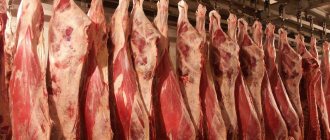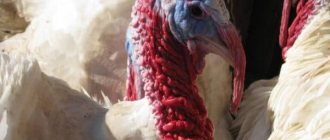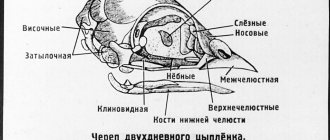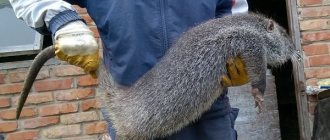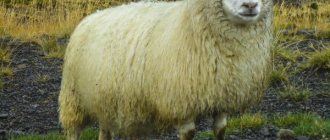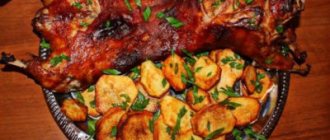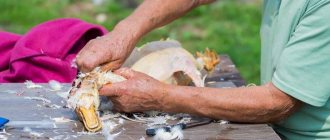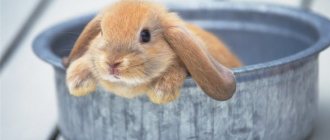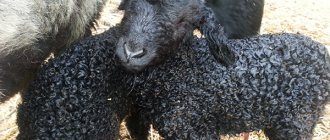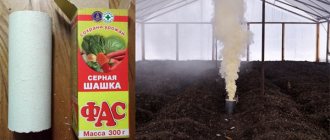What stages of preparation for slaughter need to be completed?
The slaughter procedure is complex, and preparation for it must begin in advance. Without this, you will not be able to get quality products. Many novice livestock breeders neglect the preliminary stage, and this leads to the fact that the animal may suffer during slaughter. The meat turns out tasteless and the skin is spoiled. To avoid all this, you need to immediately familiarize yourself with all the rules.
In addition, it is recommended to watch the training video in advance, where you can see all the steps. This will allow you not to get confused, and will also give you mental preparation.
Here are the stages of the preparatory period for slaughtering livestock:
- Changes in diet and water intake.
- Conducting a full medical examination to ensure that the animal is fit to be eaten after slaughter.
- Trimming a goat.
- Preparing the site and necessary equipment.
Each stage has its own characteristics that you should always remember. Let's consider the recommendations of experienced livestock breeders who have been slaughtering livestock at home for a long time.
Vaccination, trimming and medical examination of the animal
Slaughter is always planned in advance, since every livestock breeder knows to what size he wants to grow the young animals to be used for meat. Therefore, you also need to first take care to give the animal all the necessary vaccinations.
In addition to vaccines, it is recommended to carry out a course of therapy against helminths, as well as skin parasites. If in the future you want to sell the meat and skin, then all this is required, otherwise the carcass will not be accepted for sale, since it will not meet sanitary and epidemiological requirements. All these measures will allow you to protect your goats from diseases and other similar problems, which will ultimately lead to high-quality raw materials.
Animals that you are preparing for slaughter must first be examined by a veterinarian and give his opinion that they are healthy and do not have any problems.
Males require special preparation. To avoid the appearance of a specific unpleasant odor in meat, it is strongly recommended that goats be castrated. If you don’t worry about this in advance, problems may arise with selling the meat, because it will be impossible to get rid of the resulting smell.
What tools are needed
For slaughter you will need the following tools:
- a sharp knife 25 cm long for cutting cervical vessels;
- a well-sharpened knife 15 cm long for removing skins;
- oilcloth or plastic film for bedding;
- ropes for securely securing the animal;
- crossbar or tripod for hanging the carcass;
- basins, plates and pots for blood, meat and entrails;
- rags and hand wipes;
- clean water for washing the intestines.
Animal nutrition and water intake
The animal's diet must be changed immediately before slaughter. It is necessary to stop giving any type of feed to the livestock within 24 hours. This is necessary to allow the bowels to empty. This aspect is important, because a crowded gastrointestinal tract can create many problems when cutting up a goat carcass. Guts filled with digested food are more difficult to remove. If the integrity of the filled intestine is damaged, there is a risk of contamination of the meat, which will acquire a nasty smell and a bitter taste because of this.
There is no need to limit water during these days. Many farmers claim that if a goat is not fed before slaughter, its meat will be dry and tough. In addition, such a sharp restriction of food puts the animal under stress, and if water is not given, it will become too anxious, which will add difficulties to the procedure.
In a few months, you can make the animal’s diet high in calories, then by the time of slaughter the goat will gain more weight, and the meat will be tender due to the higher percentage of fat in it.
Hanging and racks for carcasses of meat products.
Preparing the site and special devices for slaughter
To select a room for the slaughter procedure, you need to follow several rules:
- The area where you will kill animals should be away from the pen with the rest of the herd. If you start slaughtering without taking this into account, the remaining goats will become agitated, which will make their meat tough and unpalatable. To prevent the animal from experiencing stress, it is necessary that there are no irritating factors in the room where it will be brought.
- Make sure there is sufficient lighting, otherwise it will be difficult for you to slaughter and butcher the animal.
- Make sure that the place where you want to do everything is properly sanitary. This is important, because if cutting is carried out without observing hygienic rules, there is a high risk of contamination of meat with pathogenic bacteria. This can lead to meat spoilage or even poisoning. Everything must be clean, and some surfaces that will be directly used for cutting must also be disinfected with antiseptic solutions.
- You need to make a frame on which you will hang the carcasses. The design must be stable, reliable and convenient to use.
- Prepare all the tools in advance. The knives used must be sharp. Make sure the handle is the right size for you.
Important! Try to plan slaughter for the cold season. During this period, animals gain muscle and fat mass, which means you will get more meat.
Methods for restraining animals before slaughter.
Optimal timing
Usually a dairy goat is not killed, but kept for 7-9 years. After all, the older the animal, the more milk it gives (from 2 to 7 liters per day). Every year, sometime in the fall, goats are mated. Pregnancy lasts 5 months. In the spring, kids are born. It is them, though fattened and grown, who are sent to slaughter.
It is advisable to castrate young goats at the age of 1-2 months, for example, using an elastic band. Then the meat will not have a specific taste and smell. For the first 3 months, newborn goats are milk-fed. Closer to summer, they are gradually transferred to plant foods.
Animals can graze on pasture throughout the warm season. During this period of the year, feed costs are minimal. In summer, goats eat only grass. Additionally, they can be given finely chopped vegetables (carrots, pumpkin, beets). To quickly gain weight, they are fed small amounts of grain mixtures (barley, oats, wheat, corn). With the arrival of the first frost, animals can be sent to slaughter. By this time, the weight of the goat should be at least 15 kilograms. There will be 2 times less clean meat after slaughter. Animals are usually slaughtered at 6-12 months of age. It is not recommended to keep goats longer. After all, the older the animal, the tougher the meat.
Expert opinion
Zarechny Maxim Valerievich
Agronomist with 12 years of experience. Our best country expert.
Ask a Question
Important! Breeding males from whom they plan to produce offspring are not sent for slaughter. Old animals are killed at any time of the year. Before slaughter, the health of the goat must be checked. It is forbidden to kill for meat an animal that is suffering from an infectious disease. It is either treated or disposed of in special crematoria.
How to properly restrain an animal before slaughter?
The animal may begin to get nervous when you bring it to the place of slaughter, because it will find itself in an unknown situation and environment. All this can make slaughtering difficult, because the goat will start to run away and break free from your hands. In such conditions it is difficult to kill an animal, it is impossible to do it quickly. An incorrect movement can lead to the fact that the goat does not die immediately, but will still suffer; this is inhumane. In order to avoid all the problems described, you need to make sure that the goat is restrained and cannot begin to actively move.
You can stun a goat by hitting it in the head with a heavy, blunt object. This must be done decisively and immediately hit quickly and hard, so as not to subject him to unnecessary torment. As soon as the goat has lost consciousness, you must immediately proceed to the next stage so that he does not have time to come to his senses.
If you do not want to stun the animal, then you need to secure it with ropes. All limbs are tied together, the assistant firmly takes the ropes and sits on top of the animal. The slaughter is carried out by another person. All this must be done calmly so as not to frighten the animal, because stress will trigger the release of hormones and make the meat tasteless and tough.
How to slaughter a goat
The purpose of slaughtering a goat is to obtain healthy and tasty meat. However, during the procedure, you must always remember its humanity. There are several basic slaughter technologies, among which we note the most popular.
With stun
Preparatory stunning of a goat with an ax or hammer is considered to be the most humane method of slaughter. Its main disadvantage is the significant difficulty in releasing blood. Basically, electric shock stunning is used in workshops in industry or on large farms.
Home technology is very simple:
- An axe, hammer or other blunt object is used to inflict a large blow to the head.
- The cervical artery is cut.
- The carcass is hung on a pole and all the blood is completely drained.
With pre-hanging
To slaughter a goat using the preliminary hanging method, it is recommended that instead of an ordinary knife, use a sharp, awl-shaped blade, with which you can make a small but precise puncture.
The procedure consists of the following steps:
- Live cattle are hung on struts, head down, and their hind legs are tied.
- A sharp blade is used to puncture the artery in the neck.
- The carcass is left hanging until all the blood has been drained.
After the procedure is completed, the euthanized animal is removed from the pole and the cutting process begins.
With horizontal fixation
The slaughter method with horizontal fixation of the animal is based on the following stages:
- The front and hind limbs of the cattle are well tied.
- The goat is placed on a flat surface on one side so that the head and neck extend beyond the edge of the base.
- A container for collecting blood, for example, a wide basin, is installed at the bottom of the head.
- With a sharp knife, with a precise movement, they cut the throat.
As soon as the animal is killed, care must be taken to ensure that clots of baked blood do not accumulate at the incision sites.
With saddling
One of the methods of slaughtering a goat is based on its preliminary mounting.
The process is performed in a similar way:
- The cattle is saddled on top, the head is fixed in parallel between the knees, the head is raised up, and the mouth is firmly clamped with a hand.
- With a precise, sharp movement, key blood vessels in the throat area are cut.
- The animal is held firmly until it stops moving.
- The carcass is hung on a crucifix and the blood is allowed to flow freely.
When slaughtering using this method, qualified livestock breeders recommend cutting the throat not very deeply, but only with enough force to open the arteries themselves.
Goat slaughter technology
Immediately before this procedure, you need to carefully prepare everything so that there are no hitches later. It is recommended to cover the surface where the carcass will be cut with film. Also, sharpen and bring your knives ahead of time. Here are the most used slaughter methods:
- An assistant secures the animal between the legs, and the butcher quickly makes a horizontal cut in the neck.
- The goat is hung upside down, the artery is cut, and blood collection begins immediately.
- The victim is first stunned with a blunt object, and then the neck is cut.
Everything needs to be done quickly, as any confusion can cause problems. Slaughtering a goat should only be done with an assistant; it is difficult to do on your own.
Step by step process
The animal is fixed in a position lying on its side or kneeling. It is more convenient to cut a small goat by simply holding it between your knees. With one hand (the left hand, if the knife is held in the right hand), the slaughterer lifts the goat’s head up, opening the throat. The second quickly and forcefully cuts the throat from left to right.
Slaughtering a large goat will require an assistant. The animal is laid on its side and all four legs are tied together. The assistant, holding the ropes, sits on the croup, preventing the cattle from moving. The slaughterer sits on the goat's shoulder or presses it with his knee and, holding the head with his hand, makes a cut in the throat.
The animal's agony continues for several seconds while blood flows out of the cut. It can be collected in a stand and used for culinary purposes.
As soon as the blood has stopped pulsating from the throat, the goat carcass is hung by the hind legs on a prepared crossbar. To do this, incisions are made in the rear legs of the animal in the area of the carpal joint - between the tendon and the bone. The sharp ends of the crossbar are inserted into these cuts. The carcass should hang head down without touching the floor.
How to butcher a goat carcass
The slaughter itself is not a simple matter, but this is only the first stage. After this, you need to perform a whole series of manipulations to get meat. You need to carefully remove the skin from the carcass, cut up all the meat, remove and process the offal. There are many stages, each of them requires time and knowledge of how to do everything correctly.
After the animal has died, it must be hung upside down on a frame to drain all the blood. You need to place the goat in an upright position immediately so that all the blood comes out and does not spoil the meat. Then you should start cutting the carcass. First of all, a long incision is made across the entire abdomen. Then, using a sharp knife, the skin is carefully removed in the direction from the stomach to the midline of the back. Circular incisions are made around all natural openings, and the skin on all extremities is also incised.
After this, the abdominal cavity is opened and all internal organs are carefully removed. For offal, you first need to prepare a spacious container where you can immediately put them. Initially, it is worth removing the hollow organs, the wall of which can rupture and spoil the meat with its contents. For ease of storage, the carcass is divided into 2 parts and sent to the freezer.
There is no need to neglect a product such as goat fat. This raw material is valuable and has a lot of useful properties. It must be carefully collected from all internal organs. Fat is useful for treating inflammation. Those organs that are not used for food are disposed of.
What to do with the skin
After removing the skin from the carcass, it is recommended to preserve it.
For this:
- it is placed on a clean, disinfected surface, well covered with salt;
- sprinkle the skin on top with a very thick layer of salt;
- the salt is carefully rubbed into the skin, then rolled up with the inside inward;
- The curved edges are straightened and rubbed well with salt.
The skin is kept in this form for one week. The readiness of the material can be simply determined by changing the color: the skin inside acquires an attractive bronze hue. The skin storage temperature must be at least + 8°C.
How to process goatskin
Before you start preserving the leather, you need to let it sit and cool. However, in no case should you forget about it, because after 6-8 hours, rotting processes will begin in this raw material.
Once the leather has cooled, you can begin processing it. To preserve it, salt is most often used. To preserve, you need to carefully spread the skin on a clean surface and carefully cover both sides with salt. As soon as the salt is absorbed a little, you can roll up the skin and store it. In this case, it is better to store it so that the fur is out.
This method allows you to preserve the skin for up to 4 days, then you need to start dressing. If you slaughter in cold weather, it is important to prevent the raw materials from freezing, otherwise the leather will then be unusable, and you will not be able to sell or use it yourself.
Tips for beginners
- It is better to slaughter goats in the cold season. The cold will help avoid possible problems with the safety of the product. In addition, it is in winter that goat meat will be tastier and fattier.
- Before slaughtering yourself, it is better to use the services of a master. This will allow you to clearly familiarize yourself with the slaughter process from an experienced person. Thus, you can remember the main features of the process, and then you can kill and butcher animals yourself. If there is little experience and knowledge, then the work will be difficult, and the animal may die for a long time and in agony. Also, if slaughtered improperly, meat may develop an unpleasant odor and its taste will be spoiled.
Share
What are the benefits of goat meat
Unfortunately, goat meat is not as common as, for example, beef or chicken. However, this product is useful.
Many people don’t even want to try goat meat, because there is an opinion that it has a specific taste and smell. However, this is not true, because if you follow all the above rules for slaughtering an animal, the meat will not smell anything unusual.
In general, goat meat is tender and tasty, but you need to understand that it all depends on what kind of animal was slaughtered. Your meat will smell disgusting if you don't follow the procedure. The smell will be caused by the animal being frightened during the slaughter process, as well as by improper removal of the internal organs from the abdominal cavity.
Important! You need to remember about timely castration of males. If this stage is skipped, then the meat may have an unattractive smell, even if all the rules of slaughter and cutting are followed.
Goat meat is rich in protein and does not contain much fat, so this type of meat is suitable even for those who are on a diet.
Preparations before slaughter
Before slaughter, special attention should be paid to the cleanliness of the room and the animal itself. As a rule, slaughter is carried out after planned deworming of the livestock - 21 days after administering the medicine. If the herd is not treated, when preparing the animal for slaughter, it is given medication for parasites and the operation is performed after 3 weeks.
It is necessary to clear the room where the slaughter and cutting of the carcass will be carried out from debris. Sprinkle the floor with clean sawdust. If the animal is beaten on the street, the area must be clean and level.
It must be remembered that fresh meat instantly absorbs all foreign odors, be it manure or cleaning products. The room must be ventilated.
Before slaughtering a goat, the animal is kept on a starvation diet for at least 12 hours. This is necessary so that the digestive tract is cleared of food.
What components are included in goat meat?
Goat meat contains nutrients, so this meat will bring many benefits. It contains many water-soluble and fat-soluble vitamins, amino acids, and various microelements. Proteins are important as a nutritional component, of which there are many in this product. All proteins from this meat are easily digested and go into the muscles.
Despite the benefits of this meat, you need to remember that it should not be consumed if you have developed an intolerance to this product. In such a situation, you need to look for an alternative.
What happens if you regularly eat goat meat?
Here are the benefits of goat meat:
- The work of the intestines will become harmonious and correct.
- The level of cholesterol in the blood will decrease, leading to the formation of atherosclerotic plaques.
- The blood vessels will be strong and elastic, and the heart will work rhythmically and smoothly.
- Your immune system will become stronger, and you will get colds much less often.
- Potency will be restored and the condition of the prostate gland will be normalized.
- The condition of the skin, as well as hair and nails will improve.
- Weight will begin to decrease, provided that the caloric intake of the diet is observed. Goat meat is dietary, but in addition to this meat, you need to fill your diet with other healthy foods.

